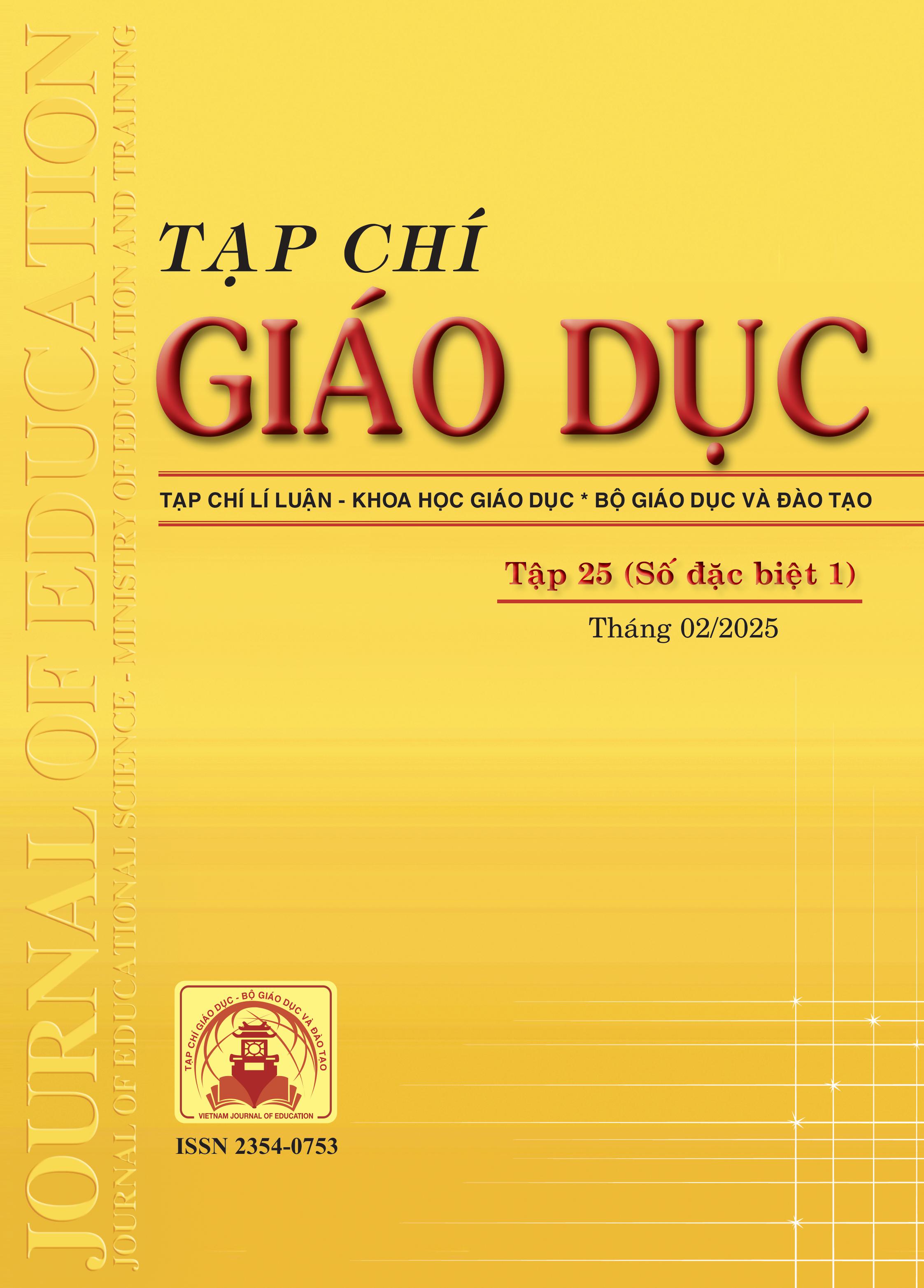Vận dụng lí thuyết Vòng tròn vàng trong tổng quan các chiến lược quốc tế hoá đại học phổ biến trên thế giới và một số khuyến nghị
Tóm tắt
As higher education is becoming more and more internationalised, higher education institutions might be given a stronger basis for sustained development by adopting a pertinent and workable approach. However, along with the weight of available resources, one of the biggest concerns of higher education institutions over the years has been the uncertainty surrounding the best course of action for internationalization. Thus, the current study, based on the document analysis method with the use of The Golden Circle as a framework for review, is an attempt to examine common strategies for internationalising higher education across the globe. The study highlights significant aspects related to the goals, contents, and methods of implementation of common strategies of higher education internationalization. Recommendations are made for Vietnamese universities based on the results gathered, and hopefully, the study opened up some intriguing research for the time to come.
Tài liệu tham khảo
Almeida, J., Robson, S., Morosini, M., & Baranzeli, C. (2019). Understanding internationalization at home: Perspectives from the global North and South. European Educational Research Journal, 18(2), 200-217.
American Council on Education (2012). Mapping internationalization on U.S. campuses: 2012 edition. http://www.acenet.edu/news- room/Documents/Mapping-Internationalizationon-US-Campuses-2012-full.pdf
Beelen, J., & Jones, E. (2015). Redefining internationalization at home. The European higher education area: Between critical reflections and future policies.
Beelen, J., & Leask, B. (2011). Internationalization at home on the move. Berlin: Dr. Josef Raabe Verlag.
Bond, S. (2003). Engaging educators: Bringing the world into the classroom. Canadian Bureau of International Education (CBIE): Ottawa.
Brandenburg U., de Wit H., Jones E., Leask B., Drobner A. (2020). Internationalisation in Higher Education for Society (IHES). Concept, current research and examples of good practice. Deutscher Akademischer Austauschdienst (DAAD).
Brandenburg, U., de Wit, H., Jones, E., & Leask, B. (2019). Defining internationalisation in HE for society. University World News, 29(6), 2019.
Cai, Y., & Leask, B. (2024). Rethinking internationalization of higher education for society from an outside-in perspective. Journal of Asian Public Policy, 1-19. https://doi.org/10.1080/17516234.2024.2406093
Cavalcante, M. T. L., Jiménez, P. L., & Navarro-Segura, L. (2021). Methodologies to enhance innovation competencies in social work education. Social Work Education, 40(3), 367-382.
Clarke, L., & Kirby, D. (2022). Internationalizing higher education curricula: Strategies and approaches. Universal Journal of Educational Research, 10(6), 408-417.
De Wit, H., & Altbach, P. G. (2021). Internationalization in higher education: Global trends and recommendations for its future. Policy Reviews in Higher Education, 5(1), 28-46.
De Wit, H., & Deca, L. (2020). Internationalization of higher education, challenges and opportunities for the next decade. European higher education area: Challenges for a new decade, 3-11.
De Wit, H., Rumbley, L. E., Craciun, D., Mihut, G., & Woldegiyorgis, A. (2019). International Mapping of National Tertiary Education Internationalization Strategies and Plans (NTEISPs). CIHE Perspectives #12. Boston, MA: Boston College, Center for International Higher Education and World Bank.
Fragouli, E. (2020). A critical discussion on issues of higher education: Curriculum internationalization, challenges, and opportunities. International Journal of Education and Learning, 2(2), 67-75.
Gosling, M., & Yang, W. (2022). Introducing internationalisation at home: Learning satisfaction under the content and language integrated learning approach. Learning and Teaching, 15(1), 46-66.
Harrison, N. (2015). Practice, problems and power in ‘internationalisation at home’: Critical reflections on recent research evidence. Teaching in Higher Education, 20(4), 412-430.
Huang, F. (2006). Internationalization of curricula in higher education institutions in comparative perspectives: Case studies of China, Japan and the Netherlands. Higher Education, 51, 521-539.
Hudzik, J. (2011). Comprehensive internationalization: From concept to action. Washington: NAFSA.
Hudzik, J. K., & McCarthy, J. (2012). Leading Comprehensive Internationalization: Strategy and Tactics for Action.
Jones, E., Leask, B., Brandenburg, U., & de Wit, H. (2021). University social responsibility and the internationalisation of higher education for society. Journal of Studies in International Education, 25(4), 323-329. https://doi. org/10.1177/10283153211031679
Knight, J. (2004). Internationalization remodeled: Definition, approaches, and rationales. Journal of Studies in International Education, 8(1), 5-31.
Knight, J. (2006). Internationalization of higher education: new directions, new challenges. The 2005 IAU global survey report. https://www.researchgate.net/publication/44836500_Internationalization_of_higher_education_ new_directi ons_new_challenges_2005_IAU_global_survey_report
Kotorov, I., Krasylnykova, Y., Zhdanov, P., Mazzara, M., Aslam, H., Akhmetgaraeva, E., ... & Brown, J. A. (2021). Institutional commitment and leadership as prerequisites for successful comprehensive internationalization. In Frontiers in Software Engineering: First International Conference, ICFSE 2021, Innopolis, Russia, June 17-18, 2021, Revised Selected Papers 1 (pp. 1-11). Springer International Publishing.
Leask, B. (2009). Using formal and informal curricula to improve interactions between home and international students. Journal of Studies in International Education, 13(2), 205-221.
Leask, B. (2015). Internationalizing the curriculum. Routledge.
Longman, K. A. (2018). Chapter one looking back and looking ahead: major contributors to faith integration in the context of us christian higher education. Christian Mind in the Emerging World: Faith Integration in Asian Contexts and Global Perspectives, 2.
Mak, A., & Ching, H. (2019, July). Teaching essential graduate attributes via digital cultural heritage: An assessment model from communication students in Hong Kong. In HEAD'19. 5th International Conference on Higher Education Advances (pp. 479-488). Editorial Universitat Politècnica de València.
NAFSA (2014). NAFSA announces 2014 Simon Award recipients. http://www.nafsa.org/
Pusca, D., & Northwood, D. O. (2020). The impact of positive change in higher education. World Trans. on Engng. and Technol. Educ, 18(4), 427-432.
Robson, S. (2017). Internationalization at home: internationalizing the university experience of staff and students. Educação, 40(3), 368-374.
Schmidt, S. J. (2019). Embracing and harnessing the intimate connection between emotion and cognition to help students learn. Journal of Food Science Education, 18(4), 87-96.
Sinek, S. (2009). Start with why. How great leaders inspire everyone to take action. London: Penguin Books.
Đã Xuất bản
Cách trích dẫn
Số
Chuyên mục
Giấy phép

Tác phẩm này được cấp phép theo Ghi nhận tác giả của Creative Commons Giấy phép quốc tế 4.0 .












